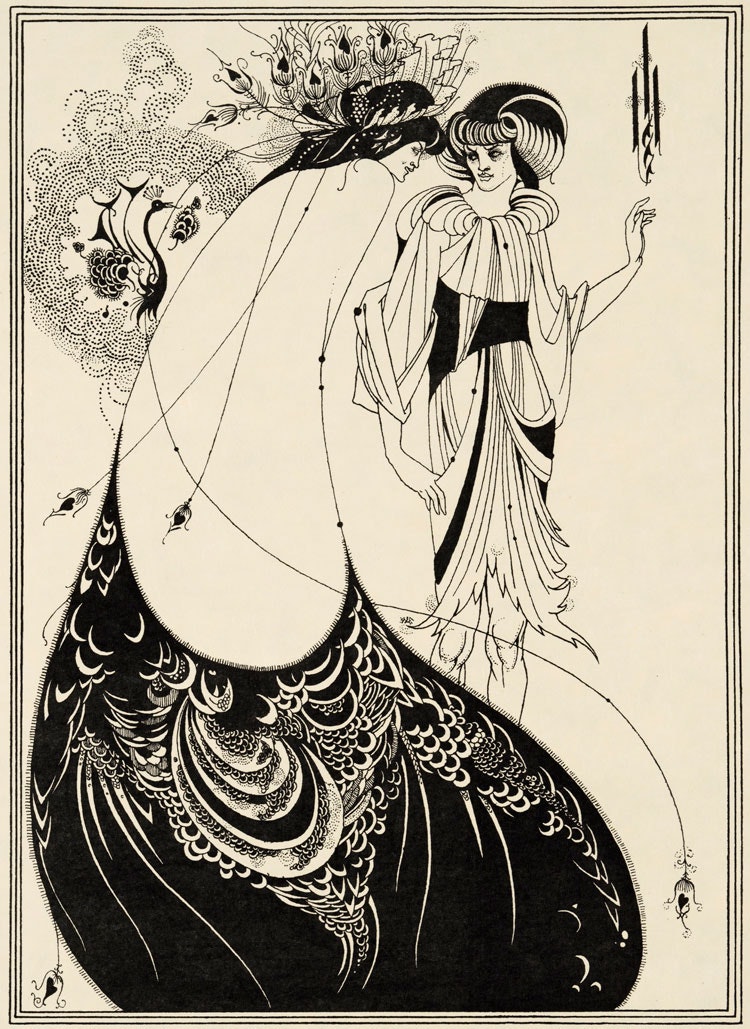Depicting decadence, erotica and the grotesque, illustrator Aubrey Beardsley’s work was enough to both shock and delight late-Victorian Britain.
Active for only a few years before an untimely death aged 25, he found inspiration in everything from traditional Japanese print work, ancient Greek vases and Rococo engravings, to contemporary creatives like James Abbott McNeil Whistler and Henri de Toulouse-Lautrec.
But though prolific enough that the 1890s were named “the Beardsley Period” by some, his work has remained on the margins of British art history, because it fell into the seemingly “lesser” category of graphic design and illustration, rather than the preferred oil painting.
A new exhibition from Tate Britain aims to change this, intending to show Beardsley and his signature black and white style as “a one of a kind”.

Pushing the boundaries of Victorian society
The exhibition spans Beardsley’s seven-year career. In this time, he worked across a number of commissions but was perhaps best known for his work in the Yellow Book and Oscar Wilde’s Salomé.
Pushing the boundaries of conservative Victorian society, his work frequently featured nudity and erotica, while the Yellow Book in particular featured scenes that went against accepted norms.
“He depicted independent women – which was quite novel at the time – and ‘women of the night’, whose lifestyle most Victorians would have disapproved of,” says exhibition co-curator Caroline Corbeau-Parsons, adding that Beardsley was also fond of depicting gender fluidity.
These were all depicted, she adds, in Beardsley’s signature “sinuous black line”. Inspired by the monochrome styles of traditional Japanese artwork, Corbeau Parsons explains Beardsley was “interested in the purest black planes and expanses of white”.
“This is probably why his drawings look so bold and striking for the time, since he was really one of the first to explore this and push it to the extreme,” she says.

“Obscene hidden details”
Underpinning Beardsley’s professional work was his proclivity for practical jokes, according to Corbeau-Parsons.
“Commissioners had to look at his drawings upside down and with a microscope to make sure they hadn’t missed any offensive details,” she says, adding that sometimes “obscene hidden details” still slipped through, like the phallic candles found in his work Enter Herodias, which were missed by publisher John Lane.
“This is not something that would have been missed by all Victorians,” says Corbeau-Parsons. “Broadly speaking, he was admired for his technical skill as a draughtsman but was widely disapproved of because of his subject choices.”
Beardsley himself, however, was thought to relish in this infamy. On his reputation, he is supposed to have said: “I have one aim – the grotesque. If I am not grotesque, I am nothing.”

Beardsley’s influence
Over the course of the last century Beardsley’s work has periodically returned to the public consciousness. The last show of his work at the Tate was in 1923, but it was a seminal exhibition at the V&A in 1966 that triggered a “Beardsley revival”, according to Corbeau-Parsons.
“People flooded to the exhibition, and most of those were young people,” she says. “As a result, Beardsley had a profound influence on psychedelic art – in the 1970s, you truly could not escape his work’s influence.”
Perhaps the best-known example of Beardsley-influenced work from this era was the Beatles’ Revolver album cover, designed by German artist Klaus Voormann, which depicted the Harrison, McCartney, Starr and Lennon in the illustrators’ signature “sinuous black line”.
Since then, Beardsley’s work has become a particular source of inspiration for the world’s fashion designers: Alexander McQueen’s pre-fall line in 2018 gave a considerable nod to his work; Spanish luxury fashion house Loewe has a capsule collection inspired by him; and though the influence is not as outright, according to Corbeau Parsons, the late Karl Lagerfeld was said to have a collection of Beardsley drawings.
Interestingly, Corbeau-Parsons says, his work has also found considerable reverence among contemporary tattoo artists, who find “a challenge in reproducing the sinuous line”.

“Living fast, dying young”
Hosting more than 200 works, Corbeau-Parsons says the aim of the exhibition is to show the breadth of Beardsley’s creativity during his short life.
“It feels like he knew he was going to die young, and was always pushing himself to try new things that would trigger his imagination,” she says. Emblematic of “living fast and dying young”, Corbeau-Parsons says she hopes Beardsley’s century-transcending “edge” will endear him to modern audiences.
The Aubrey Beardsley exhibition runs from 4 March – 20 May at Tate Britain. For tickets and more information, head to the website.




- Design disciplines in this article
- Industries in this article









